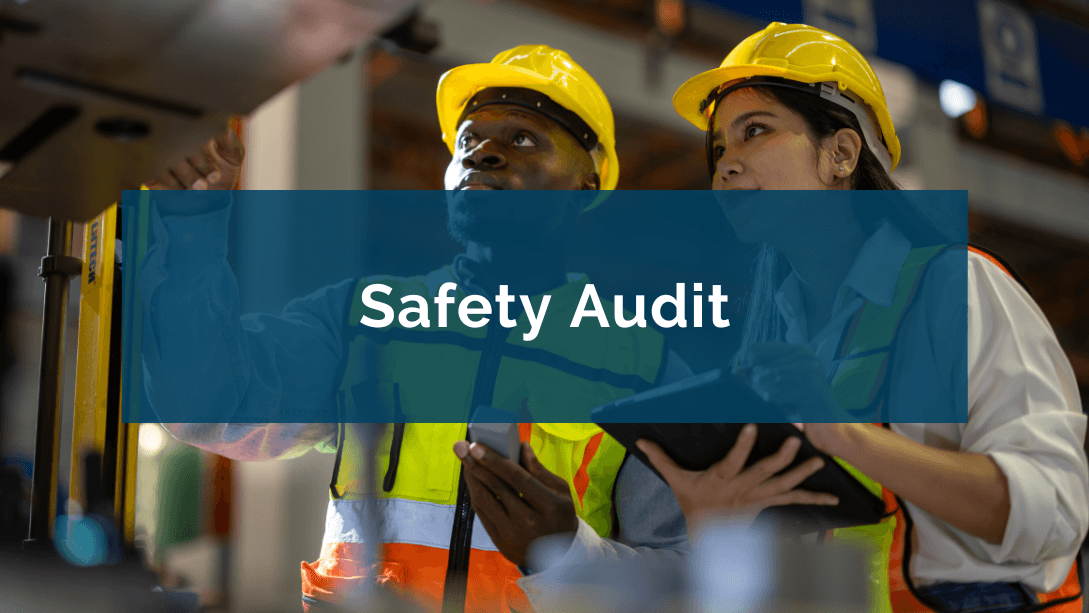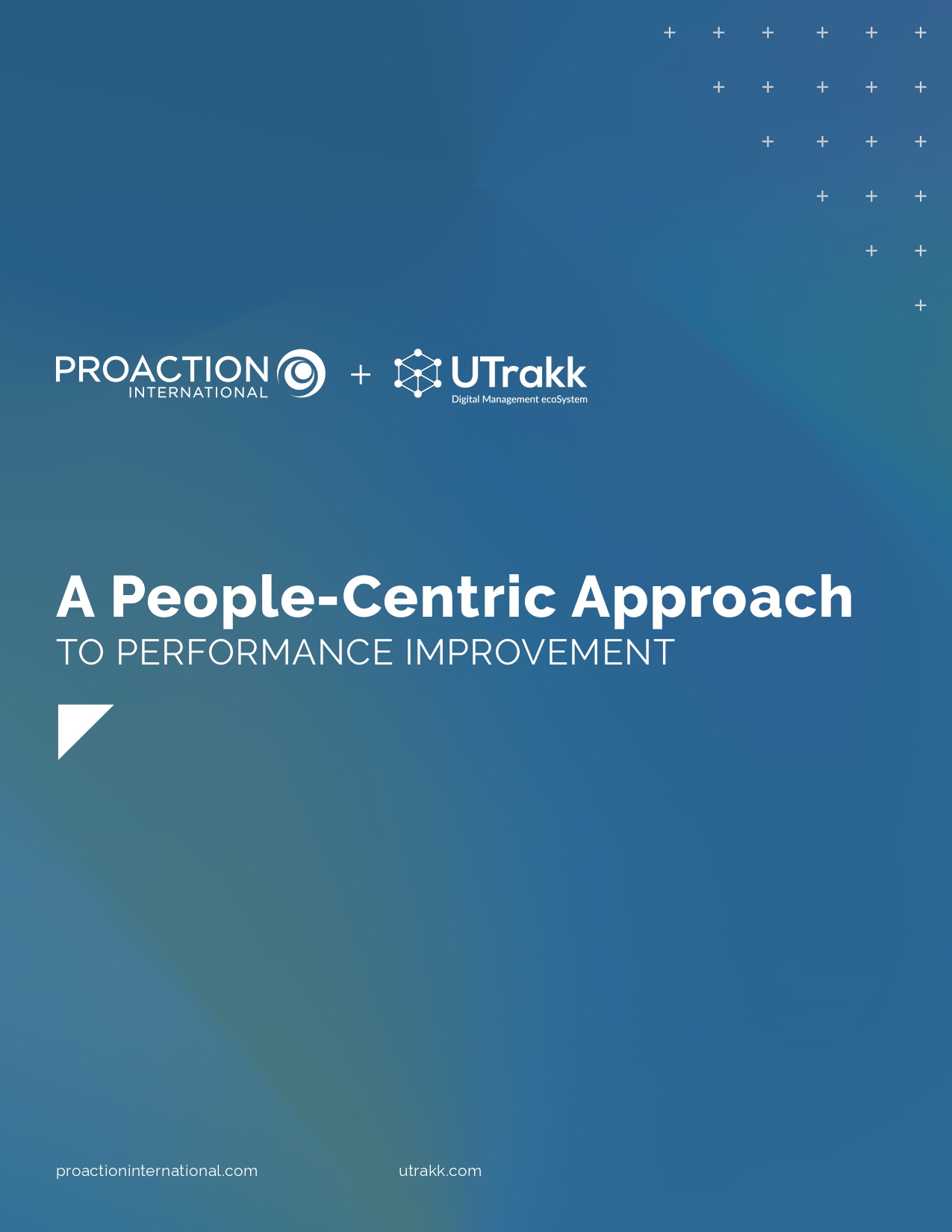What is a safety audit?
A safety audit is an independent, systematic process and a documented approach designed to verify whether an employer's practices comply with applicable safety regulations – laws, standards, and internal procedures. It aims to identify the strengths, weaknesses, and opportunities to improve the workplace safety system.
Types of safety audits
-
Internal audit: This audit is conducted by a company that wishes to self-assess, and carried out by trained staff members with auditor qualifications.
-
External audit: It’s conducted by a third-party organization – specialized firms, consultants, certifiers.
-
Regulatory audit: It verifies the organization's compliance with applicable safety standards, federal regulations, and laws.
-
Program audit: It evaluates a specific safety program to verify its implementation and effectiveness.
There are also other types of safety audits that are specific to areas of expertise:
-
IT audits analyze the security of information systems and compliance with cybersecurity policies.
-
EHS audits cover environmental, health, and safety with an integrated approach.
-
Food hygiene and safety audits focus on good manufacturing, hygiene, and traceability practices in the food and beverage industry.
-
Security audits evaluate protective measures against malicious acts related to physical security.
The modality of safety audits
In small organizations or for safety audits with limited scope (a single unit or site), a single safety auditor is usually sufficient – for example, an internal audit conducted by a member of the safety department or a one-off audit entrusted to an independent external consultant.
A multidisciplinary audit team is often required for more complex safety audits (multiple sites, multiple processes, or ISO 45001 certification). They may include a lead auditor (or "audit leader") who coordinates the process, one or more technical or field auditors, and ad hoc experts (hygiene, handling, ergonomics, etc.) who ensure safety audit standards are met.
The difference between safety audits and safety walks
Safety audits shouldn’t be confused with safety walks or routine safety inspections, which are recurring processes that allow managers to observe behaviors, identify risks, and raise awareness among teams directly on the shop floor.
While a safety walk is a daily or weekly prevention tool, a safety audit is formal, ad hoc, and designed as a comprehensive activity with a broader scope and specific evaluation criteria.
Why safety audits are so important
By identifying potential hazards within processes, equipment, or behaviors, safety audits enable proactive intervention before safety issues become accidents. WHS audits also help strengthen control in hazardous situations, prioritize actions, and assign resources where they are needed the most.
Safety audits are not limited to physical risks, such as exposure to hazardous materials, but also address psychosocial risks (stress, work overload, etc.). In this sense, they serve as a key tool for proactively preventing safety risks – long before any incident occurs.
-
Reduce workplace accidents and illnesses: Identifying hazards more effectively allows organizations to implement targeted preventive actions, reducing incidents and protecting employee health.
-
Ensure compliance with regulations: Complying with legal requirements helps avoid penalties, fines, and production stoppages, while strengthening your company's reputation.
-
Prepare for certification: Complying with recognized standards such as ISO 45001 demonstrates a structured commitment to health and safety and enhances the organization's value.
-
Strengthen the safety culture: Making safety a daily priority promotes responsible behavior, shared vigilance, and active involvement at all levels of the organization.
-
Increase employee engagement: Demonstrating that health, safety, and well-being are central to the company's concerns strengthens team members' sense of belonging, motivation, and loyalty.
-
Improve productivity: A safe work environment reduces absenteeism, unexpected replacements, and production stoppages, allowing teams to operate smoothly and efficiently.
-
Reduce indirect costs: Fewer incidents also means fewer hidden expenses – legal fines, increased insurance premiums, loss of reputation, or decreased customer satisfaction.
When should a safety audit be initiated?
It’s generally recommended to conduct safety audits once or twice a year. This frequency may vary depending on the industry or unique situation:
-
Launch of a new site or production line: These growth phases are conducive to the emergence of hazards related to new equipment, workstations, and worker training.
-
Process or equipment changes: Any change in working methods or machinery can introduce new hazards or make existing safety procedures obsolete.
-
Rapid workforce growth or restructuration: The sudden arrival of new employees or internal restructuration can weaken WHS practices if safety procedures and training are not adjusted accordingly.
-
Preparing for certification or renewal: In this context, a safety audit helps assess the current situation, spot potential gaps, and make adjustments to safety programs before the official evaluation.
It’s important to plan safety audits and be able to initiate them quickly in the event of an incident or alert in the work environment.
How to conduct a safety audit efficiently and successfully

1. Define the scope of the audit
Define your objectives. The first step is to determine what you want to achieve. Is it to assess regulatory compliance, prepare for a certification, or identify areas for improvement? Clarifying the purpose guides the entire process, helping you design a comprehensive audit.
Establish the safety audit criteria like laws, standards, or internal policies on which it will be based (Labor Code, ISO 45001 standard, etc.).
Notify teams that an audit will take place. Communicating this information in advance ensures everyone is prepared when the audit begins, reduces apprehension, promotes transparency, and engages employees.
Select your audit team carefully. Members must be qualified and trained in conducting safety audits, and, ideally, be independent from the area or team being audited in order to maintain objectivity. Depending on the situation, a company may hire an internal auditor, an external consultant, or a certification body.
Pro tips:
-
Involve stakeholders from the outset to foster buy-in and enrich goal analysis.
-
If there are multiple auditors, form a multidisciplinary group to provide a cross-disciplinary perspective on technical, human, and organizational challenges.
2. Gather the data needed for the evaluation
Analyze documentation. The auditor consults safety policies, safety protocols, current safety procedures, incident reports, training plans, job descriptions, etc.
Observe the shop floor. This involves visiting work areas (often using the Gemba Walk method) to observe practices in place, using safety audit checklists to compile deviations.
Interview employees, supervisors, and safety managers to better understand how safety is perceived and applied daily. These conversations provide a good overview of work habits, challenges encountered, and positive initiatives implemented on-site.
Pro tips:
-
Vary your sources of information (floor observations, interviews, document reviews, and previous audit reports) to get a complete picture of the situation.
-
Observe without interrupting operations during floor tours. Adopt a discreet, non-intrusive approach.
-
Document carefully by taking photos and writing down specific examples. Use a digital tool like UTrakk to centralize data.
-
Use a constructive tone when expressing your observations. The goal is to improve, not punish.
3. Compare the information gathered with defined goals
Identify deviations such as non-comformities, hazardous practices, or breaches of internal procedures.
Sort deviations by type – immediate safety, legal compliance, operational efficiency – to structure findings and then categorize them by priority (criticality).
These findings will serve as the basis for drafting the audit report, a formal document that’s essential to completing a successful safety audit. It presents the audit results with evidence and initial recommendations for corrective actions.
Most safety audits use a rating system to assess a unit or site's safety maturity level, ranging from "reactive" to "proactive" or "preventive."
4. Establish guidelines based on the audit’s findings
Make recommendations that are clearly formulated, realistic, and applicable to the shop floor. They must reflect the company's realities (team size, production rate, available resources, technical constraints, etc.). The same solution will not be suggested for SMEs with 30 employees as for facilities with 500 employees.
Involve workers. They can validate the feasibility of the recommended actions and suggest solutions adapted to their operational realities. Their feedback helps determine realistic actions by considering tangible factors (timeframes, available resources, work processes, etc.).
Pro tips:
-
Prioritize recommendations from the audit team by focusing on the most critical actions. Too many recommendations dilute the impact.
-
Inform teams of identified safety issues, audit results, decisions made, and outcomes achieved. This transparency shows collective efforts are valued, strengthens engagement, and promotes a strong safety culture.
5. Implement recommended actions
Implement recommendations. Start by developing a detailed action plan following the recommendations of the safety audits. What actions should be prioritized? Who should be responsible for each action? What resources should be used? What deadlines should be set?
Track corrective and preventive actions. Once the actions are implemented, regular monitoring is important to ensure that improvements are correctly applied and generate the expected results. The real challenge is to take full advantage of the audit by integrating and maintaining corrective action recommendations over time.
The audited company must highlight what worked well and what caused problems, and document this feedback to refine future safety audits.
Ensure thorough and efficient safety audits with UTrakk
Digitalization is transforming the way safety audits are conducted and tracked, bringing benefits such as:
-
Complete traceability of findings, evidence, and actions
-
Centralization of data on a single platform
-
Rapid analysis through dynamic dashboards
-
Mobile accessibility during floor tours
UTrakk Daily Management System (DMS) facilitates planning and management of regular safety audits. Integrated into managers' schedules, these safety inspections reinforce existing safety protocols and measures, facilitate risk identification and quick corrective actions, and establish a culture of continuous improvement in workplace safety.
UTrakk provides multiple features that help conduct a safety audit with optimal efficiency:
-
Planning of structured and periodic safety audits included in the Leader Standard Work.
-
Safety checklists enabling managers to monitor all critical items from a mobile device, during the safety audit, and generate an audit report with a single click.
-
Real-time assignment of corrective actions to managers, with deadlines.
-
Implementation of WHS improvement projects, including tasks, owners, and deadlines.
-
Creation of dashboards dedicated to safety data for close monitoring of KPIs.
Safety audit: An effective strategy for preventing hazards in the workplace
A workplace safety audit can be compared to a health check-up. It shouldn't be reserved for when an incident occurs; it serves to prevent risks, correct weaknesses, and strengthen defenses before issues become critical.
When conducted rigorously, transparently, and with close follow-up, a well-structured safety audit reveals the realities of the shop floor, challenges entrenched habits, and helps make safety a shared reflex and priority across the organization.
Instead of waiting for an accident to force change, it’s better to take a proactive stance, embedding safety audits into the daily routines and behaviors of all workers. Because when it comes to WHS, inaction always costs more than prevention.









